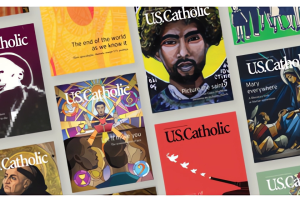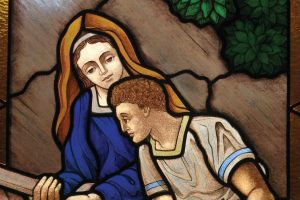c. 2013 Religion News Service
VATICAN CITY (RNS) At the heart of the Vatican’s new “Metamorphosis of Space” exhibit featuring the works of Spanish architect and artist Santiago Calatrava is the first-ever public display for the model of New York’s St. Nicholas Greek Orthodox Church.
The exhibit’s curator, Micol Forti, said the relationship between the project and the Vatican is casual—“It’s not even a Catholic Church,” she said of St. Nicholas—yet the magnetism of the model is immediately apparent.
“This exhibit is part of a dialogue with contemporary culture, and this particular piece is a large part of it,” Forti said. She pointed out an adjacent series of watercolor paintings Calatrava made to show a kind of evolution between the design of the church and a classic portrait of the Madonna and Child.
The “Metamorphosis of Space” exhibit is noteworthy because it is the first time the Vatican has organized a show on a living architect, something Forti said shows a widening reach of the Holy See’s cultural interests. It comes just months after the Vatican inaugurated its first pavilion at the Venice Biennale art festival.
The steps, Forti said, “reflect the continued openness of the church to movements in contemporary art.”
Along with Norman Foster and Frank Gehry, Calatrava is one of the most significant architects to emerge out of the late 20th century. His signature style frequently invokes themes from nature, such as his PATH train station near the St. Nicholas site that looks like a bird, or his famed “Turning Torso” apartment building in Sweden resembling the human spine.
Calatrava is not known especially as an architect of religious buildings, but there are multiple works with religious themes among the 140 selected for the exhibit. In addition to St. Nicholas, there is a model of his plan to complete the 19th-century Episcopal Cathedral of St. John the Divine in New York (work on the project is suspended for budgetary reasons); a model of a Los Angeles chapel; as well as several paintings and sculptures with religious themes.
Even the Calatrava works that are not related to religion have a solemn quality that fits well in the Braccio di Carlo Magno space on the southern edge of St. Peter’s Square.
The exhibit, sponsored by the Vatican Museums and the Pontifical Council for Culture, is a stand-alone initiative: Calatrava has not been commissioned to produce anything for the Vatican.
Calatrava was on hand for the Wednesday (Dec. 4) opening of the exhibit, where he said it was “much more than an honor” to show some of his work at the Vatican. “On my last visit to St. Peter’s, I wandered through Bernini’s colonnade at dawn and was then able to enter the Vatican gardens and admire Michelangelo’s dome,” he said in an interview before the opening. “For me, that architecture is the pinnacle.”
The exhibit, which is free to the public, will remain on display until Feb. 20, 2014.










